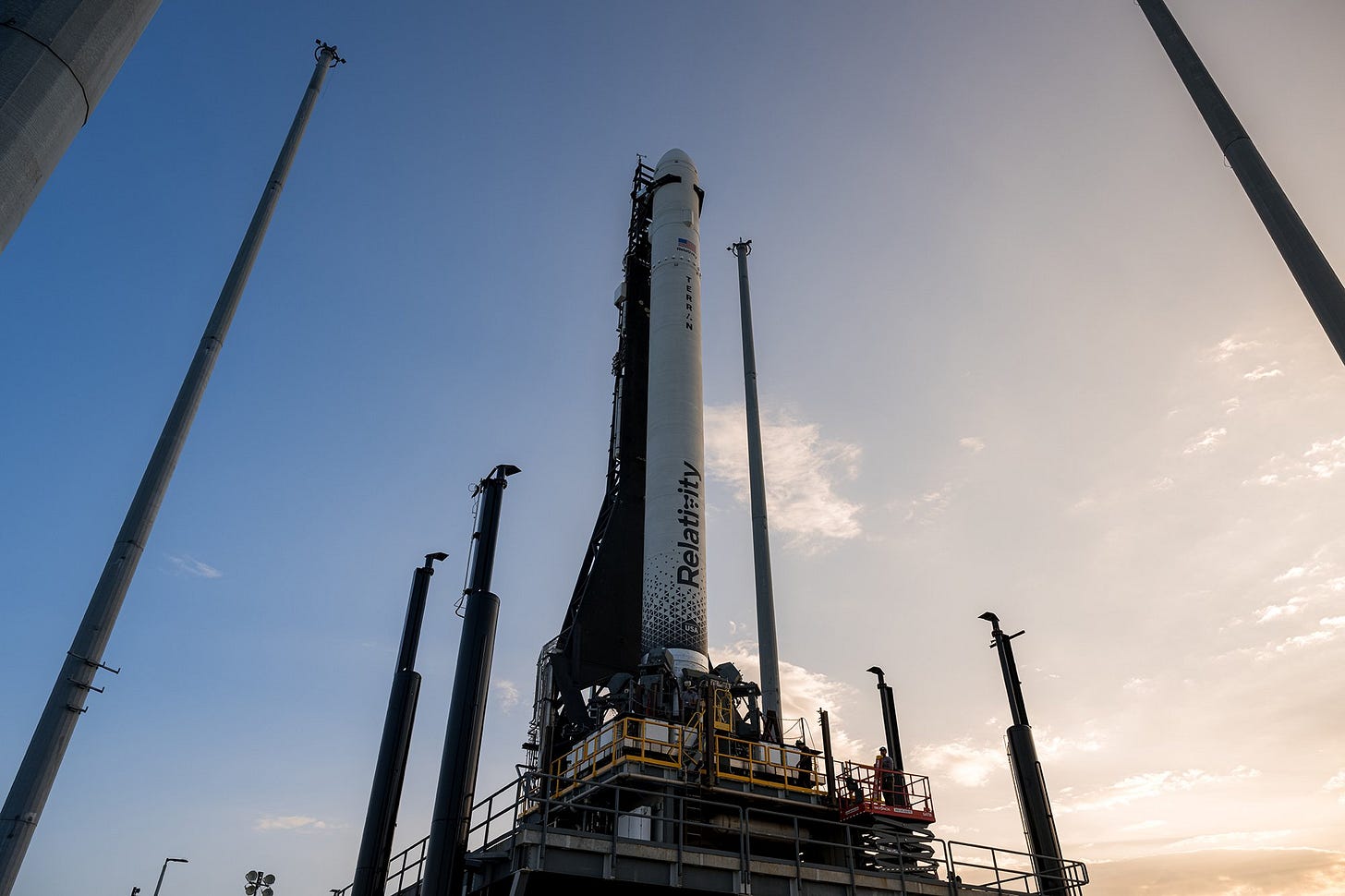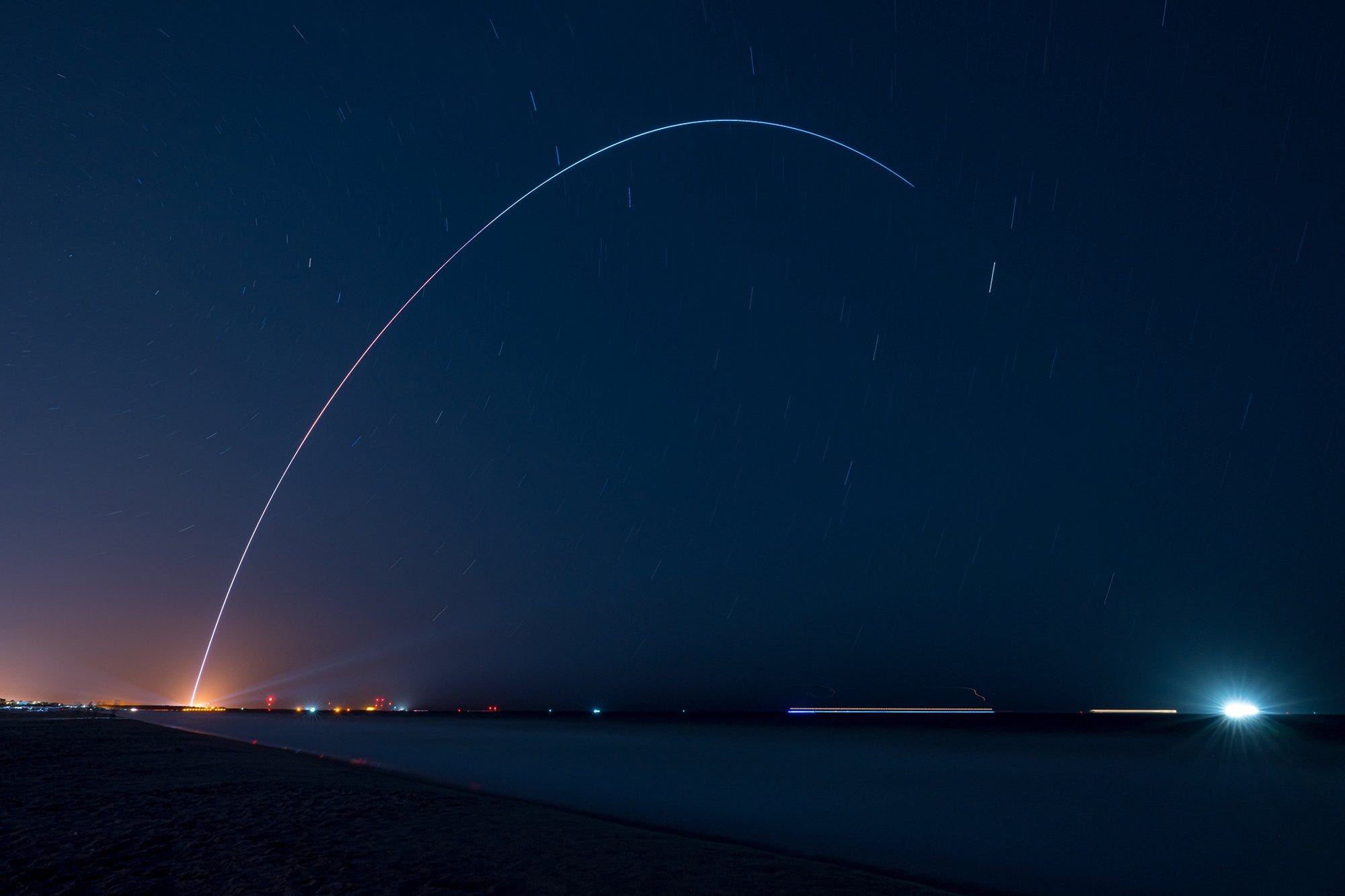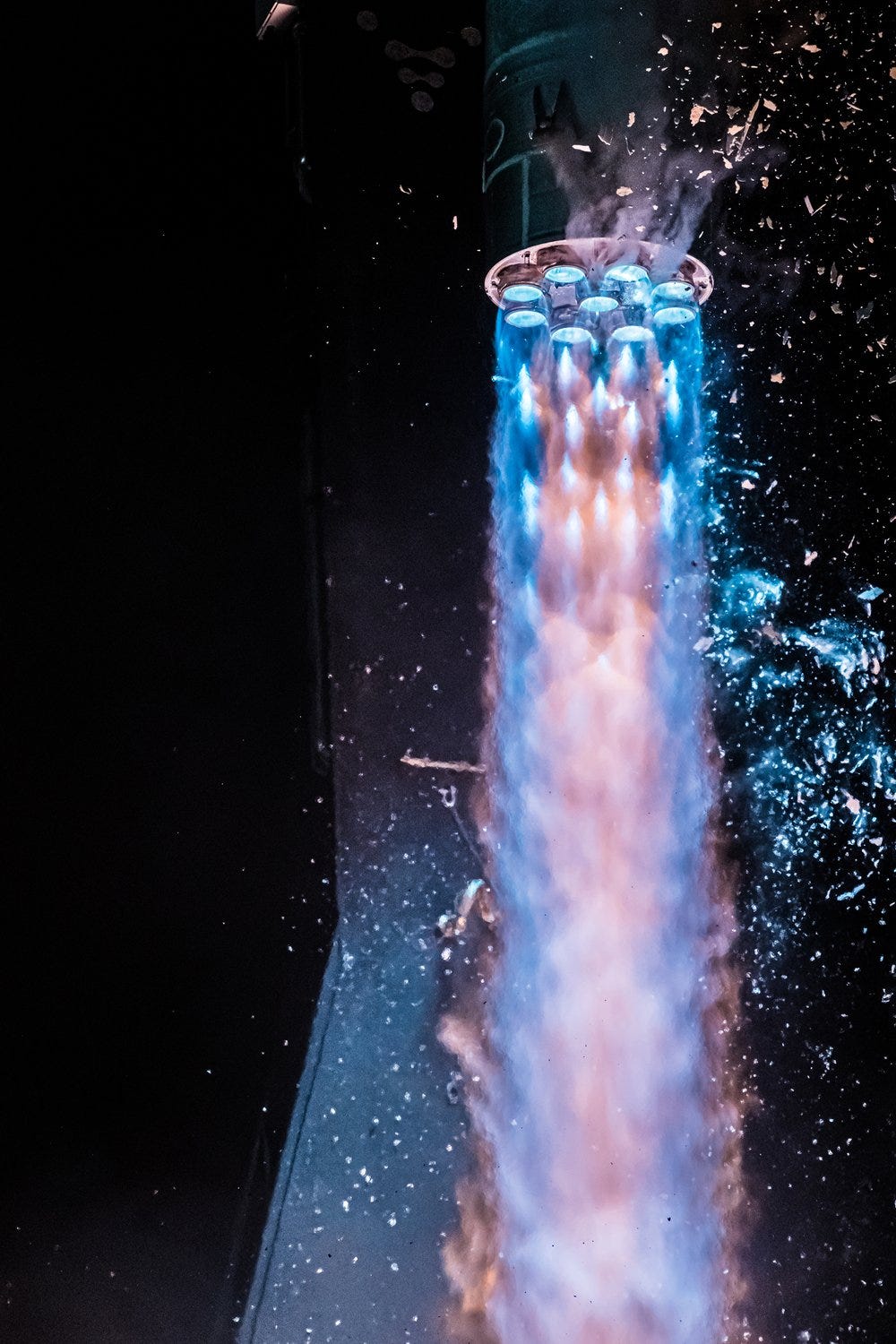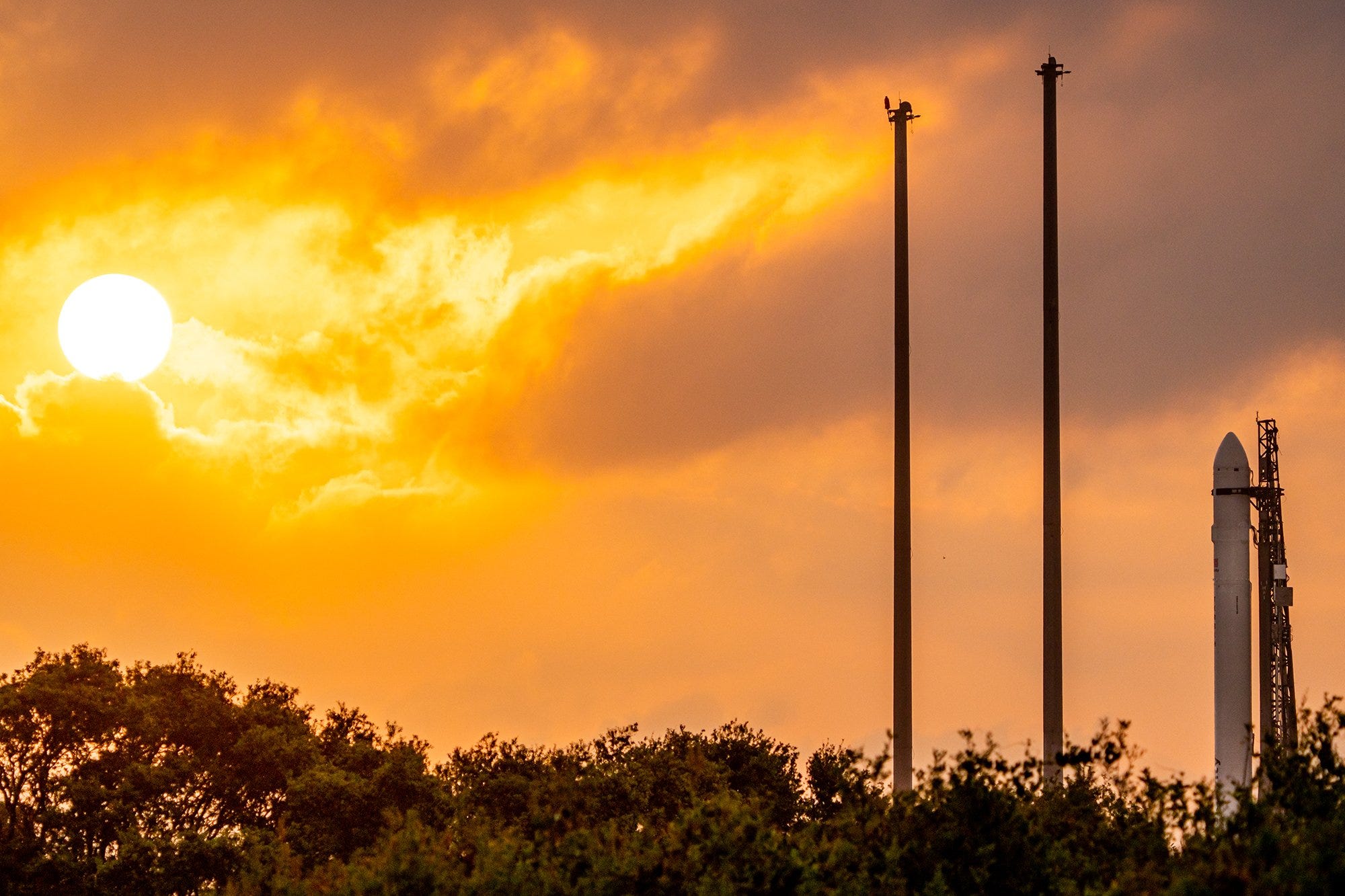Relativity Space’s Zach Dunn on 3D-printing rockets and how he narrowly avoided catastrophe while flying with SpaceX's Falcon 1 over the Pacific Ocean.
Jory Bell speaks with the SpaceX veteran about how Relativity Space sent a rocket out of earth’s atmosphere and their next commercial-ready model.
Rocketry is perhaps the most iconic endeavor in the canon of deep technology. The original work of landing a vehicle on the Moon was an astounding feat of human ingenuity that gripped the imagination of the world, rendered the impossible real, spawned countless novels and movies, and produced a number of ancillary technologies that we all rely on every day.
More than half a century later, we still dream about what lies beyond the stars. Once the work of government agencies alone, taming the universe has become the task of venture-backed companies as well. SpaceX, Blue Origin, and now Relativity Space are all vying to create the next generation of space technologies — a community of innovators that some collectively refer to as “New Space.” And while the emblems on the rocket fuselage may have transformed over the decades, legends are still made in the same thin skies over the beige sands of the Mojave Desert and the canals, mangroves, and barrier islands around Cape Canaveral.
Jory Bell, Playground General Partner, sat down with Zach Dunn for a wide-ranging conversation about New Space and Zach’s own journey from NASA intern to VP of Production and Launch at SpaceX to COO of Relativity Space. The two also touched on the first 3D-printed rocket to reach space and Terran R — Relativity’s larger commercial ready rocket.
Yet things started where any conversation about space should: with the beautiful, frightful, and cacophonous launch of a rocket through the atmosphere — even if it was just a video this time around.
This interview was lightly edited.
Jory Bell: Where were you during the launch of Terran I? Does a rocket launch ever get to be old hat?
Zach Dunn: I have wanted to be part of rocket launches my entire life, and it doesn't get old at all. Every one is exciting. I was in Cape Canaveral, Florida in the control center for this one. I wanted to run outside and see it fly, but we had to stay put, per FAA rules. So I was inside glued to my monitor and the data that was coming across our screens.
Jory Bell: Did the data look as flawless as the launch looked when it was going up?
Zach Dunn: We got a tremendous amount of super important insight.
Jory Bell: How do you think about doing high pressure dynamic problem-solving?
Zach Dunn: That is born out of the test campaigns that lead up to the launch. Certainly, me and other members of the team brought a lot of experience to the table. But there’s no substitute for a veteran launch team getting to go through the second stage testing at Stennis and then the first stage testing at the Cape all together. We all got to see this ever more increasingly complex machine come together and understand its personality and nuances. That’s a critical element when going through those operations.
Jory Bell: Is it correct that Relativity Space was the first venture-backed startup to do a full integrated test on the pad?
Zach Dunn: That’s correct. We made the decision to test the first stage at Cape Canaveral, as opposed to Stennis Space Center, which allowed us to get in laps with our regulatory partners — Space Force and the FAA. That did make the early operations more difficult. But I think that decision will prove helpful in the long run. By the time we got to launch, we had many reps together.
Jory Bell: Watching the launch, it seemed there was a point where if the rocket got fueled beyond that, then there was a two-day recycling requirement. Could you explain what's behind that — is that the ground system?
Zach Dunn: It’s the ground system. The methane that we use on the rocket is actually natural gas, which has a spec of 95% — plus or minus 1% — of methane composition. Pure methane costs as much as five to 10 times as much as natural gas since natural gas is very easy to come by.
Jory Bell: You made a lot of decisions on Terran 1 that ease the path to Terran R. What were some of those engineering and design trade-offs that you made?
Zach Dunn: Despite the size of the vehicle and the mission design, Terran 1 was really a concept car. We were pushing the technology in many different areas with the intent of melding the successful parts of the technology with more standard techniques for Terran R. But the places that we pushed Terran 1 in the interest of Terran R the most was in our choice of propellants. We knew that methane and liquid oxygen would be the propellants for Terran R. So we made the Aeon 1 engine a gas-generator cycle, one that would work very well for Terran R. The fact that there were nine engines on the first rocket and we had to deal with the complexities of multiple engines and the fluid control systems means we are better prepared for the next model. Those control systems and much of the architecture will be used directly for Terran R. Terran 1 was almost the first iteration, and we learned how we work together and how we face problems as a team.
Jory Bell: You collected a lot of data on the Terran 1 launch. Were there any surprises that are now critical learnings?
Zach Dunn: Certainly. The learning around the second stage not fully igniting and the problems that led to it are some of the most complicated problems in rocketry. These things are happening at zero gravity in the vacuum of space. To simulate them on Earth at scale requires a massive vacuum chamber test facility, and the zero gravity you just can’t do. When the second stage separation event occurred, the pressure and the “lox” — liquid oxygen — tank of the second stage decreased. There was some mixing and cooling and the pressure decreased and caused a bubble right at the lox pump of the second stage. So when we tried to get it started to feed the gas generator, it didn’t develop enough pressure and the gas generator never lit. Those are the types of problems that we were uncertain about going into launch.
Jory Bell: Terran R is bigger than a Falcon 9 and smaller than a SpaceX Starship. Why that size? Why not bigger or smaller?
Zach Dunn: Size is driven by our customer base. The supply and demand imbalance over the course of the next five years to a decade is massive and growing. Constellation launches are going to drive a huge amount of that demand. We are working closely with our customers to understand what they need. That’s where we get our understanding of demand in terms of the size of vehicles.
Jory Bell: What’s the right number of engines? Terran 1 had nine and Terran R is set to have thirteen. When do you want more engines? What’s the trade off?
Zach Dunn: It’s a tricky balance to strike. There is a sweet spot around 10 — plus or minus five — engines. Every additional engine increases complexity to the systems feeding it and the number of units the team needs to produce. On the other hand, more engines mean a more fault-tolerant flight. With more engines, we can live with one or two going out and even more going out later in flight. The question is always how many engines can you efficiently, geometrically pack into the diameter of the vehicle. Performance is a critical measure in early architecting of the vehicle.
Jory Bell: Terran R is using the gas-generator cycle from the Terran 1. Do you see ever doing a full-flow cycle engine?
Zach Dunn: I think we eventually will. For now, the gas generator seems to strike the right balance for us, especially since it allows us to iterate and move quickly on the development of the vehicle. It is high performing — not as high as full-flow stage combustion but high enough for performance. The simplicity of it also allows us to iterate and tune it much more quickly than with a full-flow stage combustion. I think we’re starting in the right place, and, in time, I think we will go to a full-flow stage combustion for greater performance.
Jory Bell: The ramp-up rate on Terran R is going to be almost unprecedented compared to some of the historical comps. What enables you to hit that ramp rate of launch and reusability in just a handful of years?
Zach Dunn: There are three elements of this challenge: First is the development of the rocket itself. Second are all the other elements like supply chain, production, test, launch, IT, recovery, refurbishment, EH&S (environmental, health, and safety), security, and so on that must rapidly scale. Third is seamlessly marrying these two worlds together. I think the real answer here is that we are acutely aware of how important this whole process is from day one. If we don’t do it right, even in the first iteration of the design of the vehicle, it won’t happen. So we’re engaged in very early system-level holistic thinking.
Jory Bell: You earned a mechanical engineering undergraduate at Duke and an Aeronautics and Astronautics Master of Science from Stanford, completed an internship at NASA and had a 13-year career at SpaceX in increasingly senior roles, ending as Senior VP of Production and Launch. What was the motivation to leave a storied career at SpaceX to join a startup like Relativity? Relativity Space was just 150 people and they had not yet launched anything.
Zach Dunn: I was really happy at SpaceX, and I didn’t have any intention of leaving. I knew about Relativity Space and 3D-printing, and I thought in the back of my head that it was certainly a direction aerospace could head. But it still felt like science fiction back then. All the same, Tim Ellis, Relativity Space’s CEO, was persistent. He kept inviting me to come have a look, and I finally decided to see what was going on. I recall at the time, I was responsible for production of all of Falcon at SpaceX. One of the most difficult parts about building the rocket is the common dome — a dome that separates liquid oxygen and the fuel of the rocket, RP-1 at SpaceX for F9 and methane for Relativity. No matter the rocket, it’s an absolute adventure to install a common dome. When I came to check out Relativity, one of the Stargate printers had already printed a barrel section and they had just uploaded the file to print a common dome into this early test vehicle using the same printer with the same tooling. I saw it happening and I thought, “Well, it’s happening now. Here it is.” I was blown away by where Relativity was technology-wise. I really liked Tim and the team and I could see myself going in and fighting the good fight with them. I was also very excited about going from my team of 3,000 people at SpaceX to this group that was 150 total and getting involved on the frontlines. So I made the leap.
Jory Bell: Speaking of the frontlines, you joined SpaceX just after the third failed launch attempt for Falcon 1. The fourth flight was coming up, and Elon Musk famously said something like, We have no more money if this flight doesn’t work. The company’s gone. At one point, you were on a C-17 military cargo plane with the fourth Falcon 1 rocket headed to launch. There’s a famous story about what happened on that C-17, isn’t there?
Zach Dunn: It was a big adventure for us. I was just 26 or 27 years old, and we had not had a successful mission to that point. The stakes were high. It wasn’t a mystery that we were running out of money; everybody in the company knew. We’re looking at our watches, not our calendars. In order to save time, rather than ship the rocket overseas to the Marshall Islands, which typically happens, we chartered a C-17 with the U.S. Air Force. We loaded both the first stage and the second stage of the rocket and a team of about 30 of us into the C-17 to get to the Kwajalein Atoll. It was this exciting atmosphere in the C-17. We were in jump seats along the side of the airplane. The walls are just stripped down to bare aluminum, there's wires and plumbing running along the walls, and the rocket was right in front of us.
Jory Bell: You mean you could touch it from where you sat?
Zach Dunn: We had our feet up on the transporter that the rocket was sitting on. As we started to descend into Hawaii for a fuel stop, which was supposed to be a one- or two-hour turnaround, we’re laughing and joking as the plane descended. And as we’re laughing and talking, all of a sudden there was a boom. It was one of those moments when everyone was thinking, “What’s going on?” We were sitting close to the C-17’s landing gear. When we took off, the landing gears made a loud clunk when they came up. Maybe it was the landing gear? As I’m thinking through this, boom, a second time. And as I look up at the rocket, my heart sinks: You could literally see where the cylinder of the rocket had started to suck in and compress like a beer can. Then boom, boom — these enormous sections of the metal were sucking in and turning from a cylinder into this petal shape. Members of the U.S. military flight crew came running down over to us asking, “Is this thing about to explode? Is it filled with gasoline? Do we need to throw it out of the back of the airplane?” We said do not throw it out of the back of the airplane. Fortunately, it was not filled with gasoline. We had people that went up and talked to the pilot and co-pilot and asked to buy us some time to fix the issue. The pilot graciously agreed and said, “We’re going to take one loop around in the pattern. You have maybe 10 minutes, then we’re landing no matter what.”
Jory Bell: What did you do?
Zach Dunn: A few of us put our heads together. We had a few options. We figured that the culprit could be the fact that we’re descending and the pressure outside of the rocket is increasing. Over the course of the flight, the rocket’s breathing through a very small tube and maybe it had basically dropped to too low of a pressure. It's very strong with an internal pressure, but not a balanced external pressure. Maybe that was what was buckling it. We had to open up a port to get the rocket to breathe. I remember going to the flight crew and asking, “You surely have some tools, right?” They came back with the most Fisher Price tools that I’ve ever seen — a hammer, a flathead screwdriver, and an adjustable wrench. I grabbed the adjustable wrench and told one of my colleagues that I’m going to crawl into the interstage — the top of the first stage of the rocket. There’s a port, about five feet in and I’m going open it up. I told my colleague, “If this thing starts to explode, you have got to get me out of here.” So I crawled in with a headlamp on and my colleague had me by the ankles ready to wrench me out of there if he needed to. Thankfully, I was able to open it up, and as soon as I got the b-nut off, and the port was open, I could hear air rushing in to fill the stage up. I shouted back that I was ready to come out and my colleague thought I was in trouble and just ripped me out of there. We did the same thing on the fuel side of the rocket and unbelievably, in that time we had been going around getting these ports open, the rocket had started to literally pop back into place in front of us… boom, boom, boom. It popped back out into a cylinder. Fast forward just a month later, that was the first SpaceX rocket to make an orbit.
Jory Bell: Was the high level of responsibility you had at SpaceX at that time typical? Was that because the organization was inherently very young and eschewing “gray hair,” legacy expertise?
Zach Dunn: I think that’s right. We had a team of outstanding leaders in the early days that came from those worlds. But Elon was always very intense about making sure that we practiced what he was preaching in terms of ruthlessly solving problems. We’re not going to get caught up in bureaucracy and processes. Our ethos was all about getting in there and making it work. We knew we were being counted upon. We all believed deeply in the mission. And everyone worked incredibly hard to a person.
Jory Bell: How do you maintain innovative freshness while taking the best practices?
Zach Dunn: It’s something that we grapple with all the time. We want to both utilize the knowledge in our possession, while not losing the ability to challenge ourselves. In the same spirit that SpaceX had when they stepped into the arena, we want to stir the pot before we get to that 80% solution. We’re not accepting what has worked before as the correct answer, but it takes a lot of discipline to live up to that philosophy.
Jory Bell: Do you think that the SpaceX heritage helped make the Terran 1 launch a success? Or is it just differences in engineering program management adopted over years of progressing through sequentially more complex programs?
Zach Dunn: I don’t think it’s necessarily so much about the SpaceX experience itself. Certainly, there are many people with SpaceX experience at Relativity. We also have some fantastic engineers and leaders from Blue Origin and Virgin Orbit. I think we’ve done a good job as a leadership team holding ourselves to a “best idea wins” mentality on the frontlines to determine the right course.
Jory Bell: I wanted to talk about Falcon 1, Falcon 9, and the birth of New Space. Over the past few years companies like Relativity and SpaceX have created a very different manufacturing process and the most reliable rocket in history was the result. I would say that defines what I would call, “New Space.” What separates it from Old Space?
Zach Dunn: I think one of the crucial elements here is this intense focus on iteration. At SpaceX, we ruthlessly problem solved our systems — the rocket itself, our production, supply chain, and launch. We tested the full platform required for a successful rocket program with a high production rate. It’s such a complicated system, that you really have to build the hardware in order to properly test and see where the problems lie. This focus on iteration, no matter where the problem lived, obsessing about getting to the problems as fast as possible, and an intense focus on solving them unites the DNA of Relativity and SpaceX. Everybody within the organization had high expectations on them. We are all problem solvers, making a difference every single day. There is no deadweight; we all count on each other.
Jory Bell: Thank you very much for your time, Zach.
Zach Dunn: It was my pleasure.







